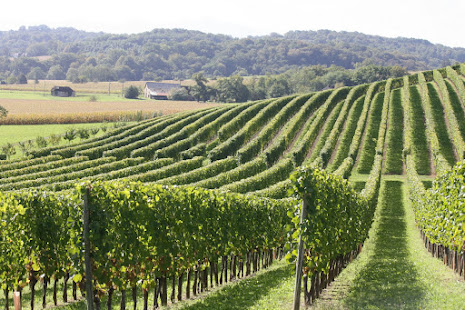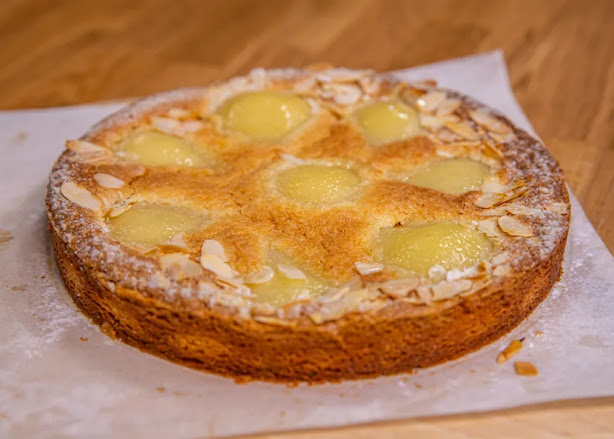Jurançon wines
Jurançon is an Appellation Controlée producing both
sweet white wine – Jurançon Moelleux (about 70% of the production) but
also dry white wines - Jurançon Sec.
The small wine region lies in a beautiful hidden corner of South West France in the department of the Pyrénées Atlantiques. The scenery is quite stunning with steep rolling hills, verdant green trees with the beautiful Pyrenean Mountain as a backdrop.The area includes about 25 “commnunes” (districts) where vineyards are tiny parcels interspersed between agricultural or livestock farms. The two principal grapes grown in the area are Petit Manseng and Gros Manseng.
As it is so hilly, a good percentage of the vines are terraced and arranged to face south or southeast for maximum sun exposure. By law harvest has to be done by hand, making harvesting incredibly physical and requiring a high fitness level. Beats going to the gym!
The area produces two types of wine:
- Jurançon sec is mainly made with Gros Manseng but also can include some Petit Manseng. Both grapes are usually picked in early October.
Profile: The dry white wines are light and have
a good acidity with an underlying minerality and crispness. Depending on the
producer, there can be a fruity flavour like grapefruit, lemon and pears. You
may also find an underlying honey although definitely not sweet.
Food pairing: Tastes delicious on their own as an aperitif or pair with dried ham, fish, trout or seafood and cheese (especially goat cheese)
- Jurançon moelleux is predominantly made with Petit Manseng but some varieties also include Gros Manseng. The process of Vendange tardive (late harvest) is to leave the grapes on the vines for a long time allowing the weather and wind to shrivel them and therefore concentrating the sugars. The grapes need a long time to ripen and are often not harvested until late November. There is actually a law (Of course! French bureaucracy…) that stipulates that the vendange tartive cannot take place before the 2nd of November. The larger quantity of grapes (much smaller size and a lot less juice) required to produce a single bottle explains the steeper price of these beautiful wines.
Profile: Fresh, crisp and fruity nose with fresh tropical fruits. Taste of honey and viscous consistency but the undernote of acidity is never lost.
Food
pairing: Classically served with Foie Gras. Because of the underlying acidity,can be
drunk as an aperitif or a dessert. Also goes well with salty blue cheese like
Roquefort and any dessert with cooked fruits.




Comments
Post a Comment